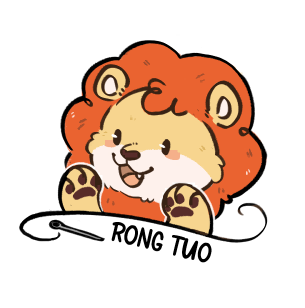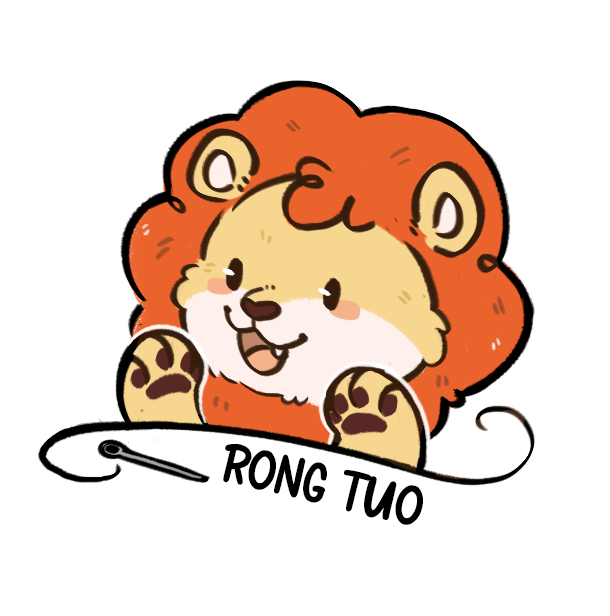Traditionelle og moderne teknikker til fremstilling af pløslegetøj
Håndsømninger: Håndværksmæssig færdighed i tilpassede pløsdyr
Håndsømmede pløslegetøj blev traditionelt højt vurderet for deres håndværksmæssige kvalitet. Hvert pløsdyr, der er lavet i hånden, er nemlig kendetegnet ved en særegenhed, som masseproducerede legetøj ikke har. Derudover er teknikken og færdigheden i at skabe håndlavet pløsdyr blevet bevaret gennem århundreder, hvilket understreger deres værdi og unikhed. Ofte kan sådanne pløsdyr opfattes som samleobjekter, da der kan gå dage eller endda uger med at lave et enkelt stykke. Bemærkelsesværdigt er kappesting og stige til håndsømning unikke teknikker, der er nødvendige for håndsømmede legetøj; den sidste sikrer både stærke søm og et attraktivt udseende. Dette øger markant legetøjets holdbarhed og visuel tiltrækning.
Markedet for håndsømmede kramdyr er stadig højt, fordi købere er mere og mere interesseret i "håndlavet" og "unikke" produkter. Og efterspørgslen efter håndlavet legetøj viser ingen tegn på at mindske, idet markedsforskningseksperter rapporterer en årlig markedsstigning på 7 % og en vedholdende forbrugerappetit på tilpassede og håndværksmæssige produkter. Dette er en stærk vej for unikke håndlavede kramdyr i en tid med teknologi og viser, at tiltrækningskraften for hjem legetøj lavet med egentilpasset kærlighed stadig er stærk!
Automatisk skæring og syning: Effektivitet i storproduktion
Automatisering af produktionen af plush-legetøj har transformeret denne markedsplads. Automatisering i produktionen af plush-legetøj har i sig selv revolutioneret hele industrien ved markant at reducere den tid, der bruges på produktion, og omkostningerne er faldet, hvilket har gjort det muligt for alle at få adgang til tilpassede plush-legetøj. De automatiserede skære- og syemaskiner benytter i almindelighed teknologisk avanceret udstyr, som sikrer, at der ikke sker nogen kompromittering af præcision og ensartethed, hvilket er meget vigtigt for at opretholde kvaliteten i masseproduktion. Disse systemer bruger computerstyrede designs til nøjagtigt at skære stoffer og udføre komplekse syemønstre, som ellers ville tage længere tid, hvis de blev udført manuelt.
Ifølge statistikkerne ved vi, at automatisering kan bidrage til den nødvendige effektivitet i vores industri, med op til 40 % mere volumen i samme faciliteter med samme personale og bestemt lavere driftsomkostninger. Midt i den stigende tendens til specialdesignede krammedyr gør automatisering det muligt for producenter at svare effektivt på efterspørgslen, fastholde høj kvalitet og reducere risikoen for fejl. Denne teknologiske innovation er i færd med at revolutionere industrien for krammedyrsproduktion ved at gøre det muligt at producere specialdesignede krammedyr ud fra tegninger i masseproduktion og dermed følge forbrugernes ønsker!
Fra koncept til skabelse: Omsætning af designs til specialdesignede krammedyr
Digitalisering af skitser til specialdesignede krammedyr ud fra tegninger
Først og fremmest er digitalisering af skitser en nødvendig komponent i processen med at omdanne håndtegnede skitser til virkelighed i form af en maßskræddersyet krammedygn. Designere må justere og finpudse traditionelle skitser i digitale medier for at sikre, at deres endelige krammetegneser er så nøjagtige som muligt. Anvendelsen af digitale værktøjer kan også markant forbedre arbejdsgangen ved at give designere mulighed for at præcist kontrollere former og farver for at sikre, at det endelige produkt minder så meget som muligt om den oprindelige idé. Til disse opgaver er både Adobe Illustrator og CorelDRAW populære og tilbyder software, der tillader avanceret redigering og lagudvikling, samt vektorisering af tegninger og lagindstillinger, som er afgørende for krammetegnesedesign.
I praksis kan du se et eksempel på dette i aktion her i et projekt, hvor en designer anvendte disse værktøjer til at "effektivt at oversætte en detaljeret tegning" af det mytiske væsen til en blød legetøj. Resultatet af denne præstation er et bevis på kraften af digital teknologi inden for design, hvor kreativitet og teknologi kombineres for at skabe personlige krammedyser, som er uslåelige i forhold til detaljering og kvalitet. Med den digitale revolution kan virksomheder desuden garantere deres kunder, at en personlig idé virkelig kan realiseres på en professionel og tidsnær måde.
3D-prototyping til kompleks karakter-replikering
3D-prototyping er en spillevælter for komplekse skræddersyede kyllingteddydesign, da det muliggør en præcis replikering af detaljeret og indviklet karakterkunst. Med 3D-print som en integreret del af designprocessen har brugere mulighed for at skabe fysiske modeller uden at skulle udlicensere deres designudvikling. Processen gør det muligt at teste og iterere funktioner realistisk, før der gås i produktion, hvilket reducerer fejl og forbedrer designnøjagtigheden.
Softwaren, der bygger 3D-modeller, som AutoCad og Rhino, gør det muligt for os at omdanne digitale idéer til virkelighed og skabe kunstværker. For masserneNår man udvikler prototyper med 3D-teknologi, oplyser virksomheder, at de sparer uger af tid og tusinder af dollars i forbindelse med designs, som de ikke kunne få helt rigtige før introduktionen af 3D-maskiner på stedet. Et godt eksempel herpå er en virksomhed, der har brugt 3D-print til at udvikle en prototype til en kollektion af skræddersyede krammedukker baseret på fantasy-karakterer. De har opnået at skære 30 % af produktionstiden og opnået bedre designpræcision. 3D-prototyping gør det muligt for virksomheder at skabe komplekse eller tilpassede designs for at imødekomme kundernes øgede efterspørgsel efter mere detaljerede og unikke krammedukker og bringer en ende på ineffektiv produktion.
Valg af materialer og fremstillingsprocesser
Valg af premium stoffer for sikkerhed og blødhed
For at opnå dette, er det blandt andet afgørende at sikre korrekt stofvalg ved fremstilling af krammedyser, hvor sikkerhed og kundetilfredshed prioriteres højest. Populære valg inkluderer bomuld, polyester og plüsch, som alle er bløde materialer og kan tåle legetid med baby samtidig med, at de opfylder sikkerhedsstandarder. Således er bomuld sat pris på grund af sin åndedrætsvenlighed (Børn), og plüsch er kendt for sin ekstreme blødhed (Børn). Vigtigheden af stofvalget fremgår også af markedsinformationer, som antyder, at flere forbrugere foretrækker at købe krammedyser, der er sikre og samtidig bløde i grebet, hvilket beviser stoffets indflydelse på forbrugerpræferencer.
Innovative teknikker til udfyldning for holdbarhed
Moderne fyldningsmetoder forbedrer levetiden for personlige dyrepelsdyr markant, så de kan vare i årtier. Almindelige fyldningsmaterialer som polyesterfiber er kendt for at være lette, beholde formen og være mindre dyre. Men der er også blevet udviklet nye teknologier, såsom dem, der bruger genbrugsmaterialer, for at gøre de mest holdbare produkter bæredygtige for miljøbevidste købere. Eksperter er enige: Høj kvalitet fyldning er nøglen til at beskytte dit pelsdyr! Disse materialer giver ikke kun en behagelig følelse, men påvirker også legetøjsdyrets levetid, hvilket viser deres rolle i ydelsen af et pelsdyr.
Kvalitetsstyringsstandarder i produktion af pelsdyr
Styrketests af sting for langvarige legetøj
Kvaliteten af syning i bløde legetøj er meget vigtig for at sikre sikkerhed og holdbarhed, og det gælder især for legetøj til børn. Den traditionelle manuelle kvalitetskontrolmetode, hvor styrken af sylingen testes, anvendes bredt i krammetøjsindustrien. Disse undersøgelser følger som udgangspunkt etablerede normer såsom ASTM F963, EN71 osv., som angiver visse krav med hensyn til legetøjssikkerhed. Ved at udsætte sømmene for krævende sylingstests kan producenterne sikre, at sylingerne ikke vil revne under almindelig brug, hvilket er meget vigtigt for at opnå kundetilfredshed. Hvis dette ikke tages i betragtning, kan legetøjssikkerheden være i fare, hvilket kan føre til produkttilbagekald eller utilfredse forbrugere og skade brandidentiteten. Branche-dokumentation antyder, at en sådan kvalitetskontrol er nødvendig for at sikre produktets holdbarhed og forbrugertilfredsheden i den konkurrenceudsatte legetøjsmarked.
Sikkerhedsmæssige overensstemmelseskontroller for børnevenlige produkter PRODUKTER
Produktionssikkerhedsregler for pløslegetøj indebærer flere inspektioner for at overholde forskellige regler som ASTM F963 i USA eller EN71 i Europa. Disse regler vedrører børns sundhed og sikkerhed og omfatter sikkerhedsmæssige spørgsmål såsom farested for forgiftning eller kvælningsrisiko, brandfarlighed og det materiale, som legetøjet er lavet af. Manglende overholdelse vil udsætte et mærke ikke kun for retlige skridt, men også skade på brandreputation, hvilket vil undergrave forbrugernes tillid. En meningsmåling viste desuden, at 85 % af forældrene mener, at sikkerhedsattester er afgørende, når de køber legetøj – derfor er kontroller så vigtige. Manglende kontrol med overholdelse medfører dyre tilbagekald af produkter og tab af kundeloyalitet, så producenter skal sikre, at de sikrer disse sikkerhedsstandarder, hvis de ønsker at blive taget alvorligt og fortsætte deres forretningsvirksomhed.
Nye teknologier i tilpasset pløsproduktion
AI-assisteret mønstedesign til unikke creationer
Tilpasset design af pløslegetøj og AI-teknologi AI-teknologi er ved at ændre ansigtet på tilpasset design af pløslegetøj ved at transformere mønsteoprettelsen. Denne gennembrudsteknologi gør det muligt for kunder at skabe unikke og personlige dukker, der passer til enhver! En vigtig fordel ved AI i mønstedesign er, at den kan understøtte både små og store serier og garantere præcision, ensartethed og lav menneskelig fejlmargin. Alligevel har adoptionen af AI i designprocessen nogle udfordringer, såsom store indledende investeringer og behovet for ekspertise. Virksomheder som Disney Research har allerede succesfuldt integreret AI i deres designarbejdsgange og har set en stor indvirkning på skabelonproduktionen af tilpassede pløsdyr, som fascinerer forbrugerne. Denne udvikling spejler den overordnede udvikling inden for revolutionerende produktionspraksis, som fører til revolutionerende produkter – med AI som en nøgleaktør i pløslegetøjsindustrien.
Bæredygtige produktionspraksisser for miljøvenlige legetøj
Der er en tendens til genbrug i produktionen af bløde legetøj, idet forbrugerne presser for mere bæredygtig leg. Industrien for kramlegetøj skal især omfavne bæredygtige processer, som anvender produkter, der er mere miljøvenlige. Med omhyggelige affaldsminimeringsstrategier, såsom genbrug af ubrugte stoffer og anvendelse af biologisk nedbrydbare elementer, kan branchen styrke sine grønne kvalifikationer. En undersøgelse viste, at 72 % af forbrugerne foretrækker at købe grønne legetøj, og tallet stiger. Ved at integrere sådanne initiativer i produktionsmetoderne beskyttes og forbedres virksomhedens ry og følger samtidig forbrugertrenden mod bæredygtige produkter. At vise loyalitet over for bæredygtighed er for eksempel ikke kun godt for planeten, men også en fordel for at styrke et mærke og skabe kunder, der elsker naturen.
Fælles spørgsmål
Er håndsyede kramdyr mere holdbare end maskinfabrikerede?
Ja, håndsømte krammedukker er ofte mere holdbare på grund af de omhyggelige sømteknikker, der anvendes i deres fremstilling, såsom kantsting og skridtsting. Disse teknikker forbedrer både styrken og tiltrækningskraften af legetøjet.
Hvordan påvirker automatisering produktionomkostningerne ved fremstilling af tilpassede krammedukker?
Automatisering reducerer markant produktionomkostninger ved at øge effektiviteten og præcisionen, hvilket gør det muligt at producere tilpassede krammedukker i stor skala uden at kompromittere kvaliteten.
Hvad er rollen af digitale værktøjer i design af tilpassede krammedukker?
Digitale værktøjer som Adobe Illustrator og CorelDRAW er afgørende for at konvertere håntegnede design til digitale formater, hvilket sikrer, at den endelige krammedukke ligner det originale koncept nøjagtigt med præcis kontrol over former og farver.
Hvorfor er 3D-prototyping vigtigt i fremstilling af krammedukker?
3D-prototyping er afgørende, fordi det giver designere mulighed for at skabe realistiske modeller af komplekse designs, hvilket reducerer produktionsfejl og fremskynder produktionsprocessen.
Hvordan sikrer producenter sikkerheden af pløste legetøj?
Producenter udfører sikkerhedsmæssige overensstemmelseskontroller i overensstemmelse med standarder som ASTM F963 og EN71 for at sikre pløstelegetøjs sikkerhed med hensyn til materialetoxicitet, kvælningsfarer og brandfarlighed.
Indholdsfortegnelse
- Traditionelle og moderne teknikker til fremstilling af pløslegetøj
- Fra koncept til skabelse: Omsætning af designs til specialdesignede krammedyr
- Valg af materialer og fremstillingsprocesser
- Kvalitetsstyringsstandarder i produktion af pelsdyr
- Nye teknologier i tilpasset pløsproduktion
- Fælles spørgsmål


